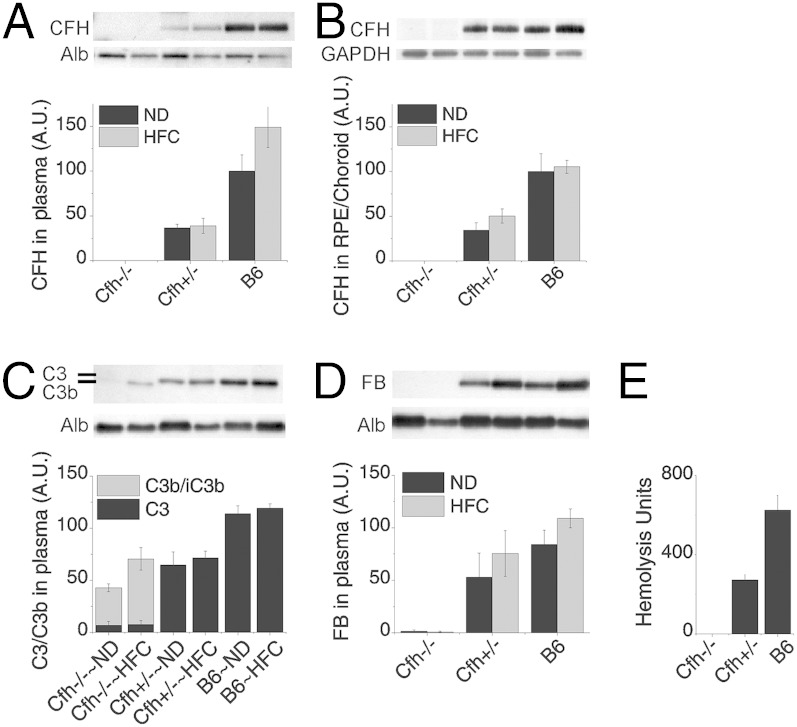Fig. 1.
Fluid-phase complement dysregulation in old Cfh+/− mice versus age-matched Cfh−/− mice, which are deficient in key activators of the complement cascade. (A and B) Densitometric analysis of CFH immunoblots from plasma (A) and lysates of RPE/choroid (B) across genotype and diet. Note that Cfh+/− mice have approximately one-half as much CFH as wild-type (B6) mice. (C and D) Densitometric analysis of C3/C3b (C) and FB (D) immunoblots from plasma of B6, Cfh+/− and Cfh−/− mice fed a normal (ND) or high-fat, cholesterol-enriched (HFC) diet. The dose effect of CFH on circulating C3 in plasma shows fluid-phase complement dysregulation in Cfh+/− mice, compared with B6 mice and the absence of circulating C3 and FB in Cfh−/− mice. (E) Red blood cell (RBC) hemolysis assay in each genotype; Cfh+/− mice had approximately one-half of the intact C3 compared with wild-type B6 mice, confirming fluid-phase complement dysregulation. In contrast, as expected, Cfh−/− mice were unable to lyse antibody-primed sheep RBCs due to the lack of reserve intact C3. Data are presented as mean ± SE. n = 5–8 per group. Albumin (Alb) served as a loading control in A, B, and D. GAPDH served as loading control in C.

